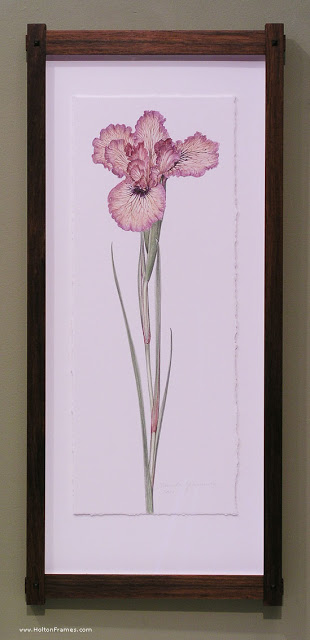We just framed a set of three floral watercolors by northern California artist Pamela Glasscock. To marry the delicate images with a Craftsman interior, we couldn’t do better than our old standby, the Yoshida frame. Made in machiche, a tropical hardwood (sustainably harvested) from Belize, which we chose for its natural color which harmonizes perfectly with the paintings. The frame’s joined with tiny through mortise-and-tenon joints with raised square plugs at the corners.
One reason I wanted to show this here is because it contrasts with the heavier frames we use on the oil paintings I tend to blog about. Also, we haven’t framed close here, so it’s a chance to show we don’t always frame close. Instead, the paper, which has nice deckled edges, is floated. Floating can come off as pretentious—a way of separating the picture from the frame and surroundings. In other words, it often has a stand-offish effect. In this case, though, it simply treats the paper as a three-dimensional object. A watercolor of this delicacy is never going to be integrated architecturally—achieving what’s sometimes called “mural feeling.” So in this case, the separation effect of floating makes sense.
Pamela Glasscock is represented by Calabi Gallery, in Petaluma, CA and I. Wolk Galleries. A wonderful watercolorist!
